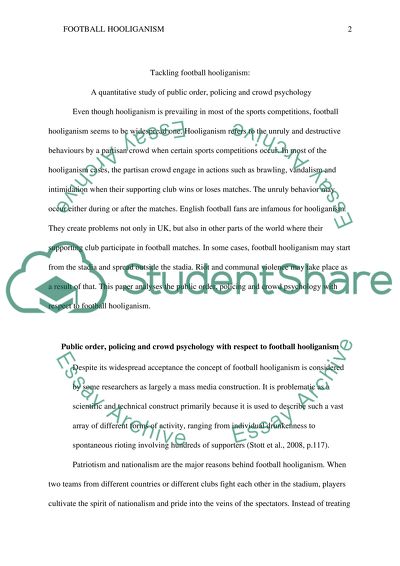Cite this document
(“Tackling Football Hooliganism: A Quantitative Study of Public Order, Research Paper”, n.d.)
Retrieved from https://studentshare.org/psychology/1453238-tackling-football-hooliganism-a-quantitative-study
Retrieved from https://studentshare.org/psychology/1453238-tackling-football-hooliganism-a-quantitative-study
(Tackling Football Hooliganism: A Quantitative Study of Public Order, Research Paper)
https://studentshare.org/psychology/1453238-tackling-football-hooliganism-a-quantitative-study.
https://studentshare.org/psychology/1453238-tackling-football-hooliganism-a-quantitative-study.
“Tackling Football Hooliganism: A Quantitative Study of Public Order, Research Paper”, n.d. https://studentshare.org/psychology/1453238-tackling-football-hooliganism-a-quantitative-study.


